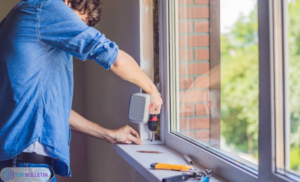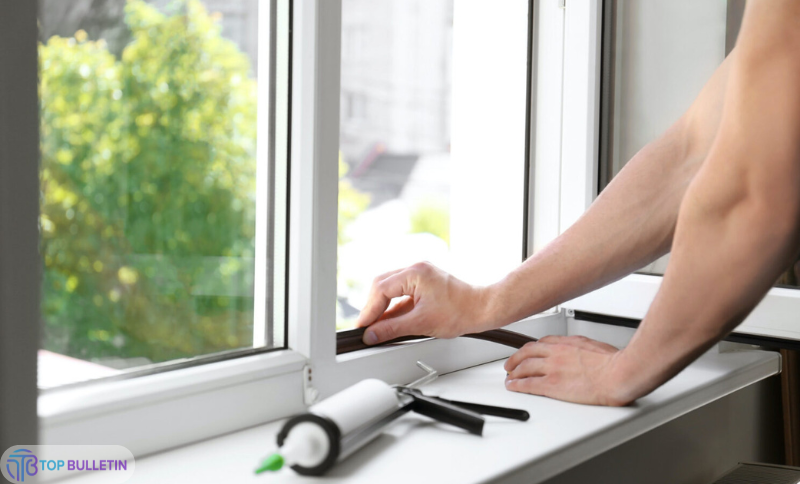If you’ve ever noticed drafts, foggy glass, or higher energy bills, chances are your window_seal is to blame. A window_seal plays a critical role in your home’s insulation, energy efficiency, and even noise reduction. Whether it’s a rubber window seal in your living room or an RV window_seal on your camper, keeping it intact is key.
In fact, understanding the basics of window_seal repair and window_seal replacement can help save money, increase comfort, and improve your overall living experience. That’s why we’re breaking down everything you need to know about window seal, including tools, techniques, and smart tips that even professionals swear by.
What Is a Window Seal?

To begin with, a window_seal is the barrier that exists between your window’s glass panes and its frame. Because it is designed to prevent air and moisture from entering your home, the windo_ seal plays a crucial role in maintaining indoor comfort and efficiency. Furthermore, it helps reduce noise, keep out dust, and lower energy costs by sealing off gaps that allow outdoor elements inside.
Moreover, every type of window—whether it’s residential, commercial, or even in an RV—relies on a dependable window_seal to function properly. In many cases, when this seal starts to wear down or break, you may notice foggy glass, water stains, or higher utility bills. As a result, understanding how a window_seal works can help you detect early signs of failure and take timely action. Ultimately, by knowing what a window_seal is and why it matters, you’ll be better equipped to handle issues before they become expensive problems.
Common Types of Window Seals
There are several kinds of seals, depending on your window type:
1. Rubber Window Seal
-
Found in most residential and commercial properties
-
Flexible and weather-resistant
2. Foam Window Seal
-
Often used as temporary insulation
-
Works well for renters
3. Window Seal Tape
-
Ideal for DIY fixes
-
Seals gaps and cracks effectively
4. Portable AC Window Seal
-
Designed to keep hot air out while using portable AC units
-
Usually comes with adhesive tape and fabric seals
Signs of a Broken Window Seal
First of all, it’s important to recognize the early warning signs before the problem gets worse. In many cases, a damaged window_seal can go unnoticed until it starts affecting your comfort or your energy bills. Therefore, you should always keep an eye out for the following indicators.
To begin with, one of the most obvious signs is condensation forming between the glass panes. This usually means moisture is getting in, which only happens when the seal is no longer airtight. Additionally, if you feel a draft even when the window is closed, that’s another clue something’s wrong.
Moreover, you might notice the glass looks cloudy or foggy, even after cleaning. This is a clear signal that the insulated glass unit (IGU) has failed. Furthermore, over time, you may observe that the window becomes harder to open or close, which could be due to warping caused by water intrusion.
Not only that, but an increase in your heating or cooling bills could also point to a broken seal letting outside air in. In some situations, the seal may even look visibly cracked or shrunken, especially on older windows.
All in all, if you notice any of these signs, it’s time to consider window seal repair or replacement as soon as possible. Otherwise, the issue could lead to bigger problems like mold, water damage, and energy loss.
How to Fix a Broken Window Seal
While some repairs require professional help, there are also DIY methods you can try.
Step-by-Step Guide for Window Seal Repair:
1. Inspect the Damage
Start by examining all sides of the window. Is the entire seal damaged or just a small section?
2. Clean the Area
Remove dirt, dust, or old adhesive using rubbing alcohol or soapy water.
3. Apply Window Seal Tape
This is an excellent short-term fix. Window_seal tape sticks firmly and creates an airtight seal.
4. Use Silicone Caulk or Rubber Sealant
For minor cracks or gaps, apply a silicone sealant to block air and water leaks.
5. Replace the Entire Seal (If Needed)
Sometimes, the damage is too great, and you’ll need full window_seal replacement. More on that below.
Window Seal Replacement: When and How to Do It
If temporary fixes don’t hold, replacing the entire window_seal is the only reliable solution. This is especially common for older windows or high-traffic areas.
When Should You Replace a Window Seal?
-
When fogginess doesn’t go away
-
When the seal is completely cracked or peeling
-
When repairs fail multiple times
How to Replace a Window Seal:
-
Remove the Old Seal – Use a scraper or utility knife.
-
Clean the Surface – Ensure the area is smooth and dry.
-
Apply the New Seal or Gasket – Press it firmly in place.
-
Seal the Edges – Use caulk or tape for extra protection.
You can find rubber window seal kits or adhesive-backed seals at most hardware stores.
RV Window Seal: Special Considerations
If you own a camper or mobile home, your RV window_seal needs extra attention. Driving vibrations and changing weather make it wear out faster.
How to Maintain Your RV Window_Seal:
-
Inspect seals before every road trip
-
Use RV-specific window_seal tape
-
Avoid pressure washing windows directly
-
Store RVs in shaded areas to prevent drying and cracking
Replacing an RV window_seal follows the same steps as residential ones but may require curved seals or flexible materials.
Portable AC Window Seal: A Must-Have for Summer
 When using a portable air conditioner, you might notice warm air coming through the gaps in your window. A portable AC window_seal kit solves this issue easily.
When using a portable air conditioner, you might notice warm air coming through the gaps in your window. A portable AC window_seal kit solves this issue easily.
Key Benefits:
-
Keeps cool air in and hot air out
-
Increases AC efficiency
-
Reduces dust and insects from getting inside
Installation is usually as simple as:
-
Applying the fabric seal to the window frame
-
Securing it with adhesive tape
-
Zipping the AC exhaust hose through the opening
Window Seal vs Window Sill: Don’t Get Confused
Many people mix up window_seal with window sill, but they’re not the same.
| Term | Function |
|---|---|
| Window Seal | Seals air/moisture between glass & frame |
| Window Sill | Horizontal base of the window |
Understanding the difference helps you better explain issues when hiring a pro or shopping for materials.
Window Seal Maintenance Tips
To keep your window_seal lasting longer, follow these tips:
-
Regular Cleaning: Dirt and moisture wear out the seal.
-
Check After Weather Changes: Especially after snow, storms, or heatwaves.
-
Avoid Slamming Windows: It weakens the seal over time.
-
Apply UV-Resistant Sealant: For sun-exposed windows.
Bio Table
| Name | Kevin Blake |
|---|---|
| Profession | Home Improvement Expert |
| Experience | 10+ Years in Window Installation |
| Specialties | Window seal repair, RV windows, energy-efficient homes |
| Location | Denver, Colorado |
| Quote | “A strong window seal is the silent hero of your home’s energy system.” |
Conclusion
Your window_seal might not be something you think about every day — until something goes wrong. But as you now know, a healthy seal plays a big role in maintaining comfort, energy efficiency, and indoor air quality. Whether you’re using window_seal tape for a quick fix, doing a full window_seal replacement, or simply maintaining your RV window_seal, the key is regular attention and swift action when things go wrong.
Remember, a small issue like a broken window_seal can turn into a costly problem if ignored. Take the time to inspect, repair, or replace as needed — and you’ll save yourself headaches down the road.
If you’re in doubt, don’t hesitate to reach out to a local professional who can guide you through the process. Your windows — and your wallet — will thank you!
FAQs
1. What causes a window seal to break?
Temperature changes, poor installation, and old age are the main culprits.
2. Can I use window seal tape as a permanent fix?
It’s great for temporary fixes, but full seal replacement is best for long-term durability.
3. How long does a typical window seal last?
With proper maintenance, about 10–20 years.
4. Is a broken window seal a serious problem?
Yes. It leads to energy loss, moisture issues, and higher bills.
5. How much does window seal replacement cost?
DIY kits can cost under $20, while professional repair may range from $100–$250 per window.






